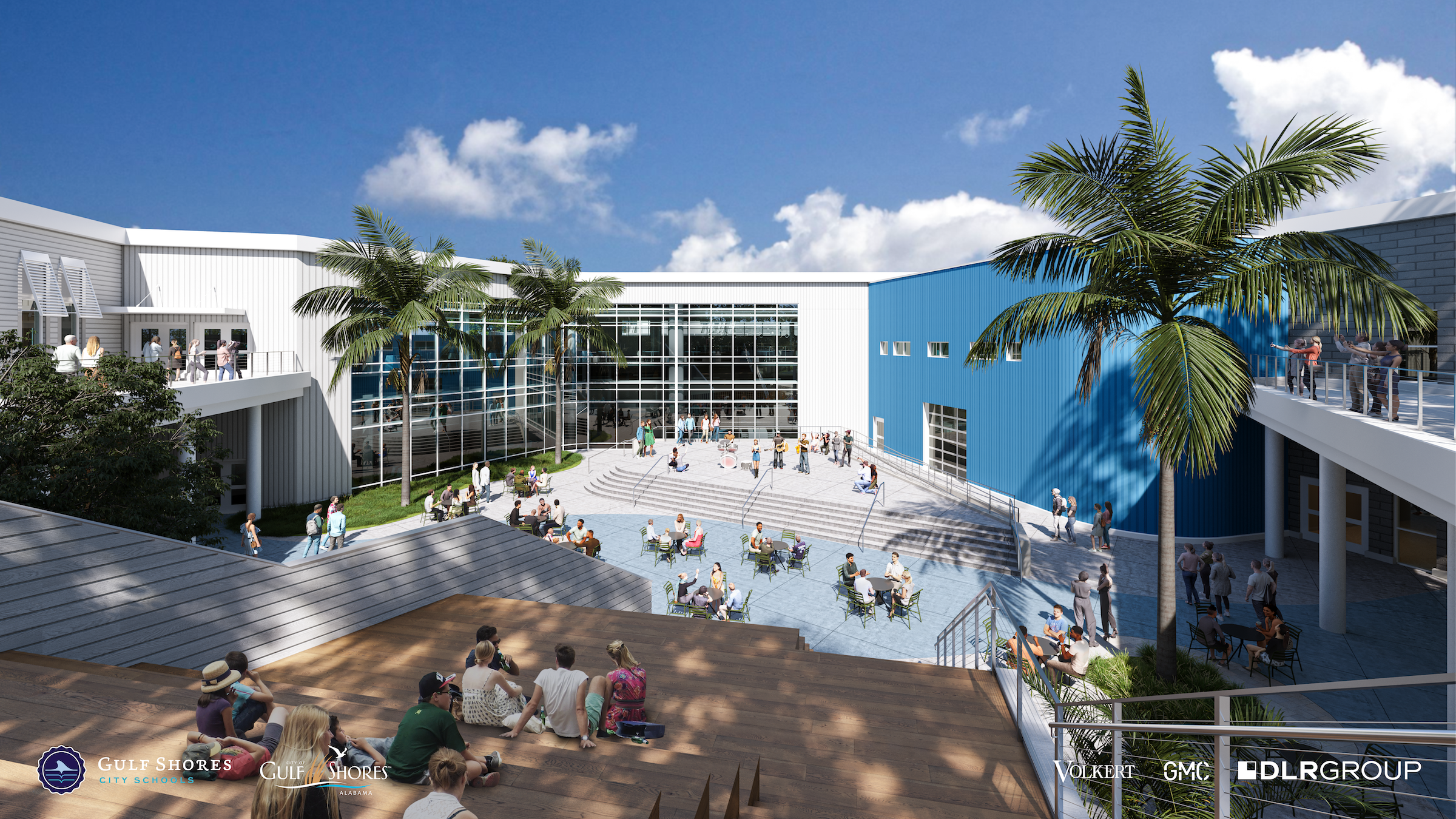In Gulf Shores, a city on Alabama’s Gulf Coast, a new $137 million high school broke ground in late April and is expected to open in the fall of 2026.
Designed by DLR Group and Goodwyn Mills Cawood, the 287,000-sf Gulf Shores High School will offer cutting-edge facilities and hands-on learning opportunities. The school will include state-of-the-art academic labs specializing in biomedical, marine biology, culinary arts, and finance, as well as spaces for music production, broadcasting, and the arts.
The school’s collaborative spaces include widened hallways, a media center with a maker space and video production studio, and a courtyard with “learning stairs” for interaction. The design also serves Gulf Shores City Schools’ emphasis on inclusivity and diversity of learning styles, with adaptable learning spaces and flexible classroom designs.
A notable feature of the new school is a “flex suite,” a versatile area that can accommodate groups of varying sizes, with seamless transitions between various activities. Similarly, the main hallway’s “sandbar” offers students a space to connect academically and socially.
The school’s Dolphin athletics center will be equipped with competition-size gymnasiums, locker rooms, athletic training rooms, a weight room, and a full-length covered practice facility.
Drawing on the coastal surroundings, the design features vibrant blue tones and other details that evoke the Gulf’s shoreline. Tall windows and expansive glass panels provide natural light and create an energizing learning atmosphere.
“The collective dedication of our educators, passionate community members, and forward-thinking leaders has shaped the vision for our new Gulf Shores High School,” Kevin Corcoran, Gulf Shores City Schools board of education president, said in a statement. “This school will be a hub of innovation, a center for excellence, and shape the future for generations to come.”
On the Building Team:
Owners: Gulf Shores City Schools and The City of Gulf Shores
Architect of record: Goodwyn Mills Cawood
Design architects: DLR Group and Goodwyn Mills Cawood
MEP engineer: DLR Group
Structural engineer: Tucker-Jones Engineers Associates
Interior designer, civil engineer, landscape architect: Goodwyn Mills Cawood
Interior designer, theatrical designer, lighting and acoustical engineer: DLR Group
Program manager: Volkert, Inc.
General contractor: Rabren General Contractors
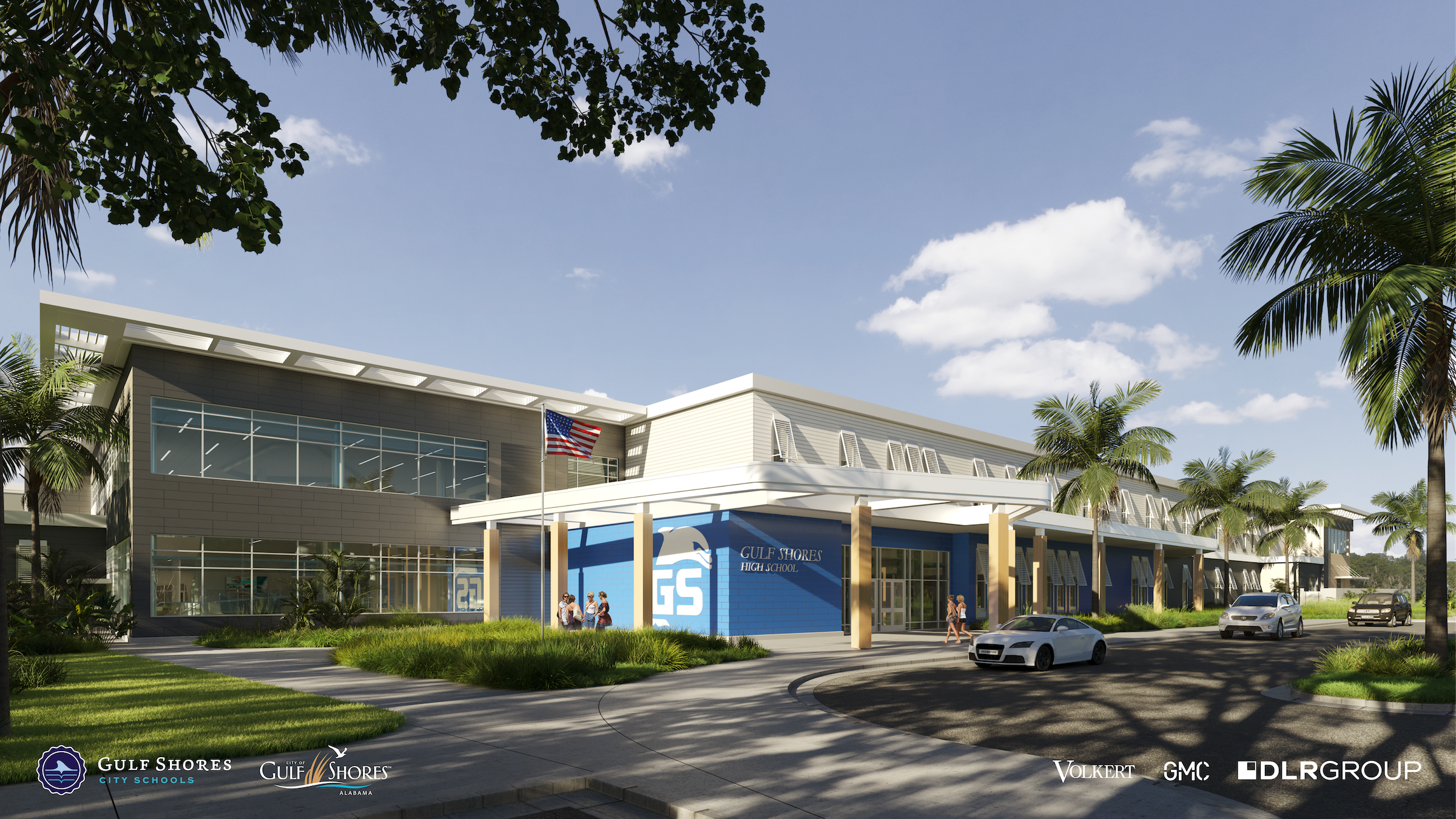
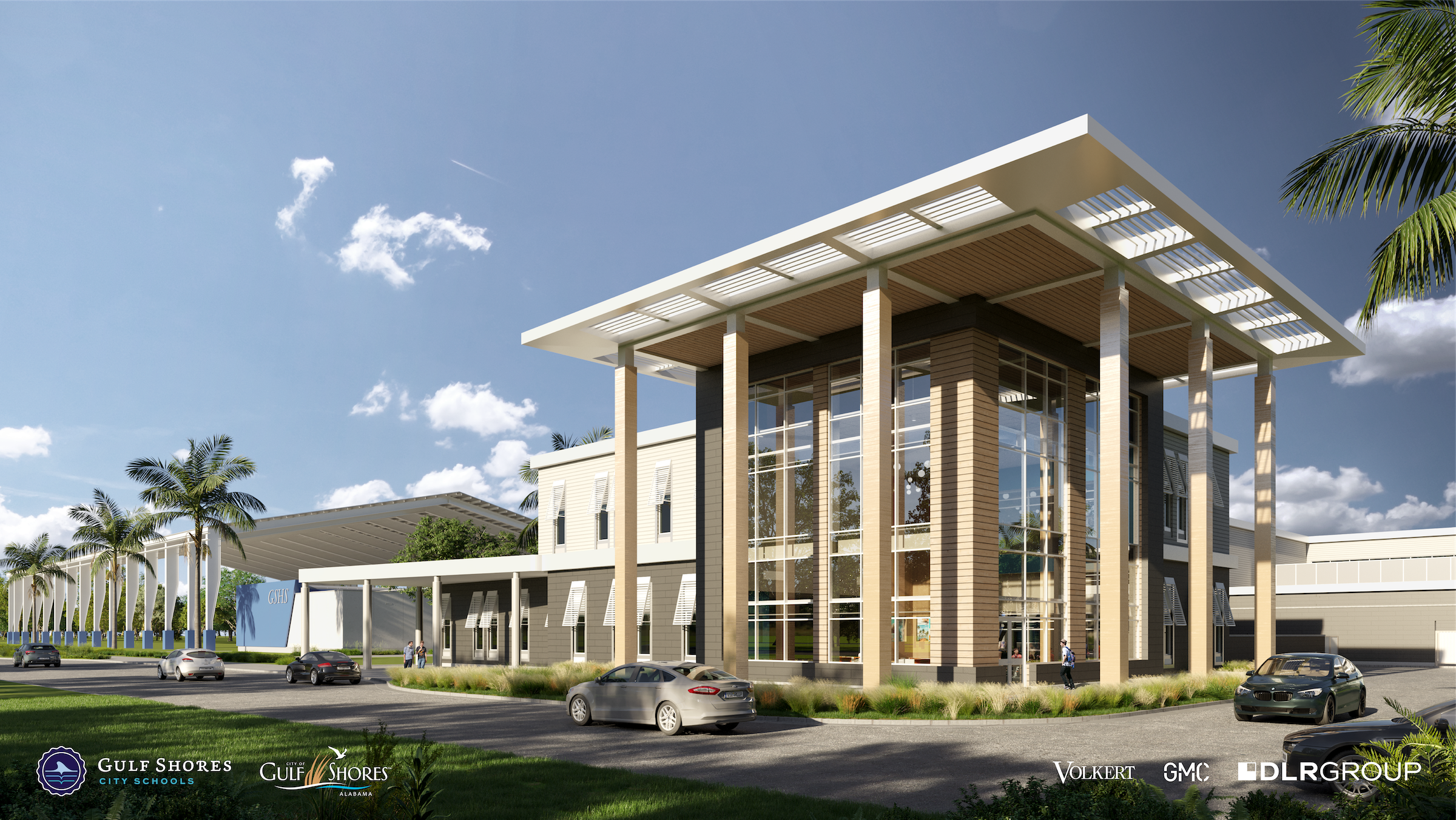
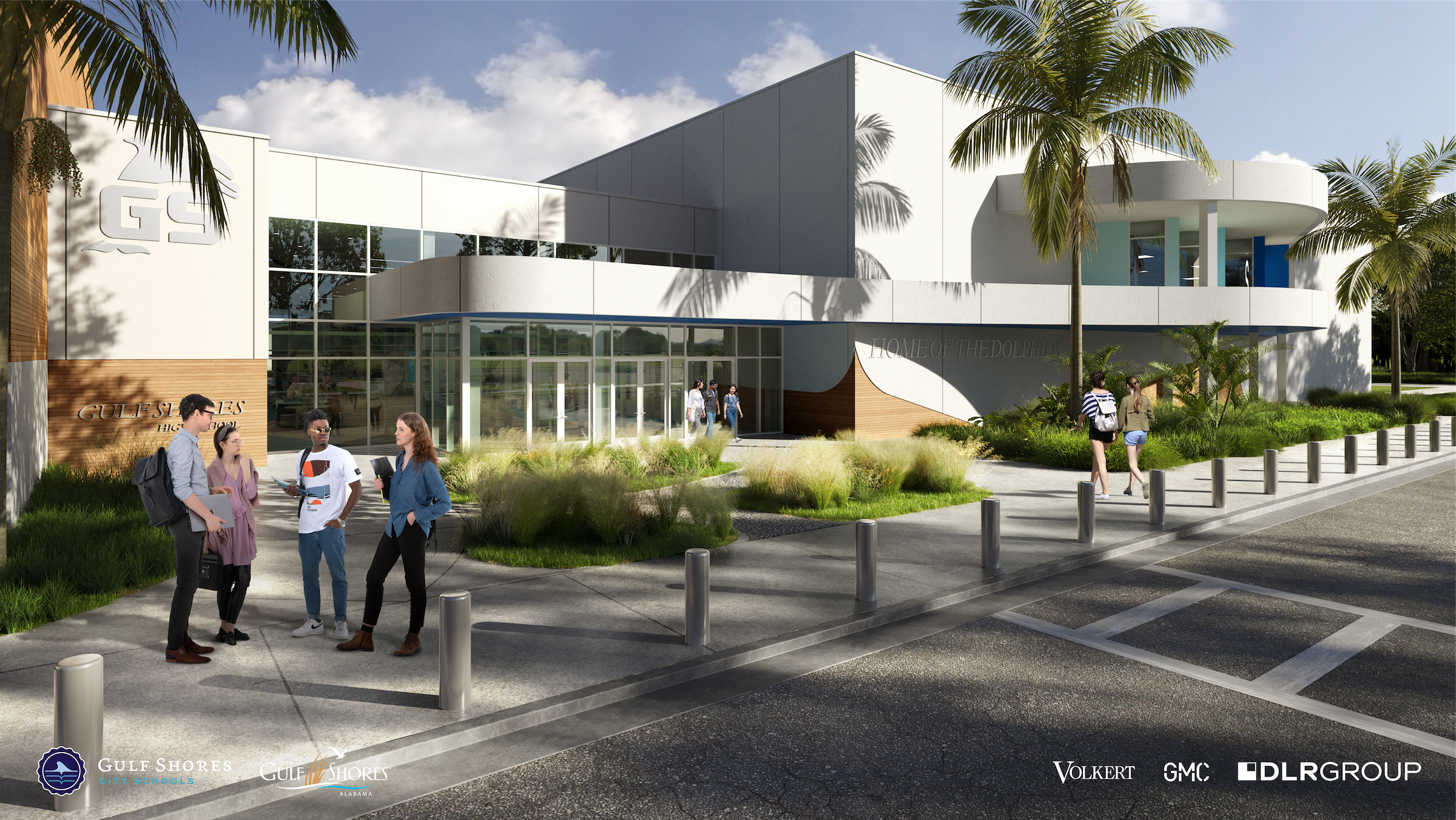
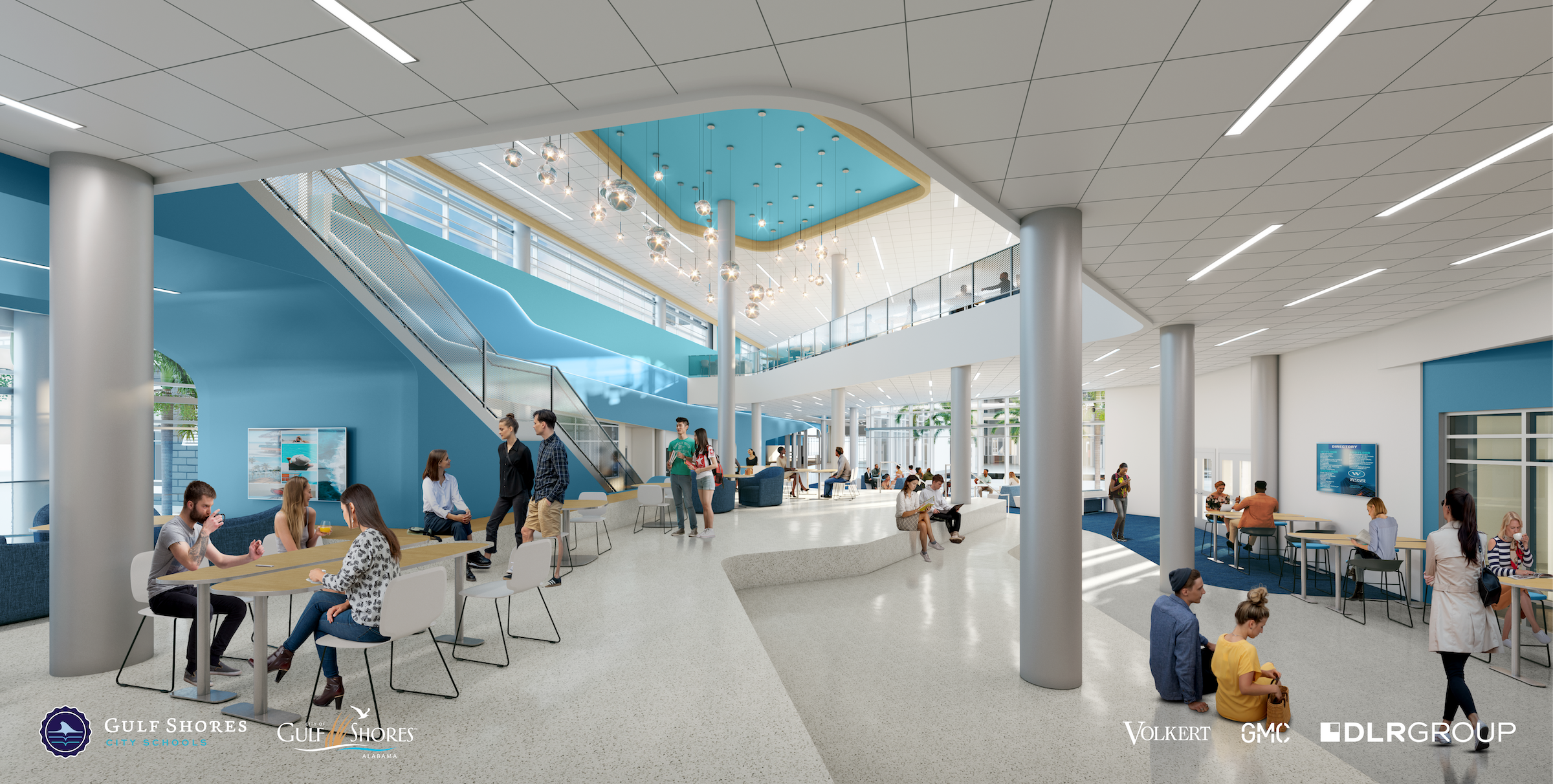
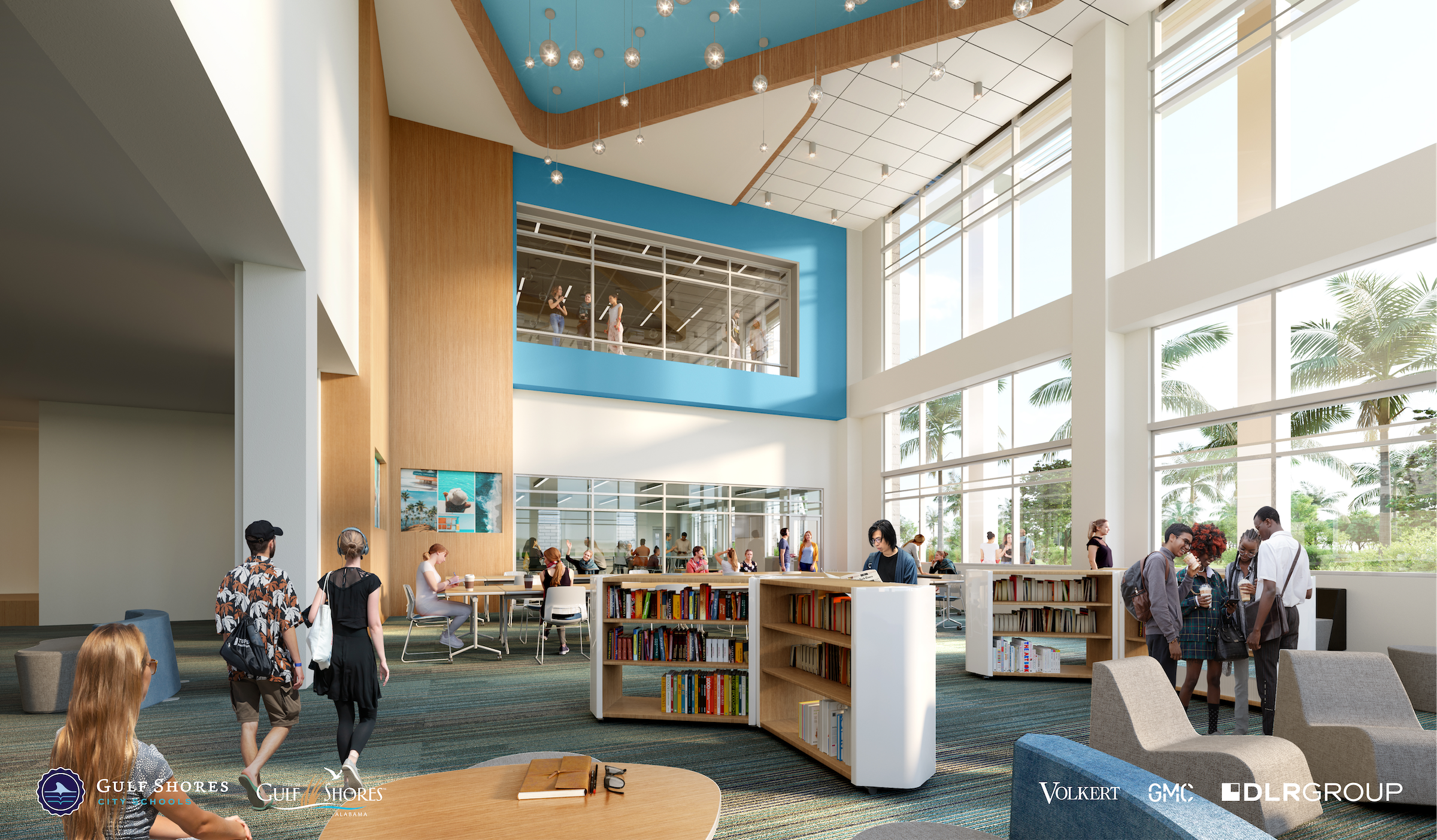
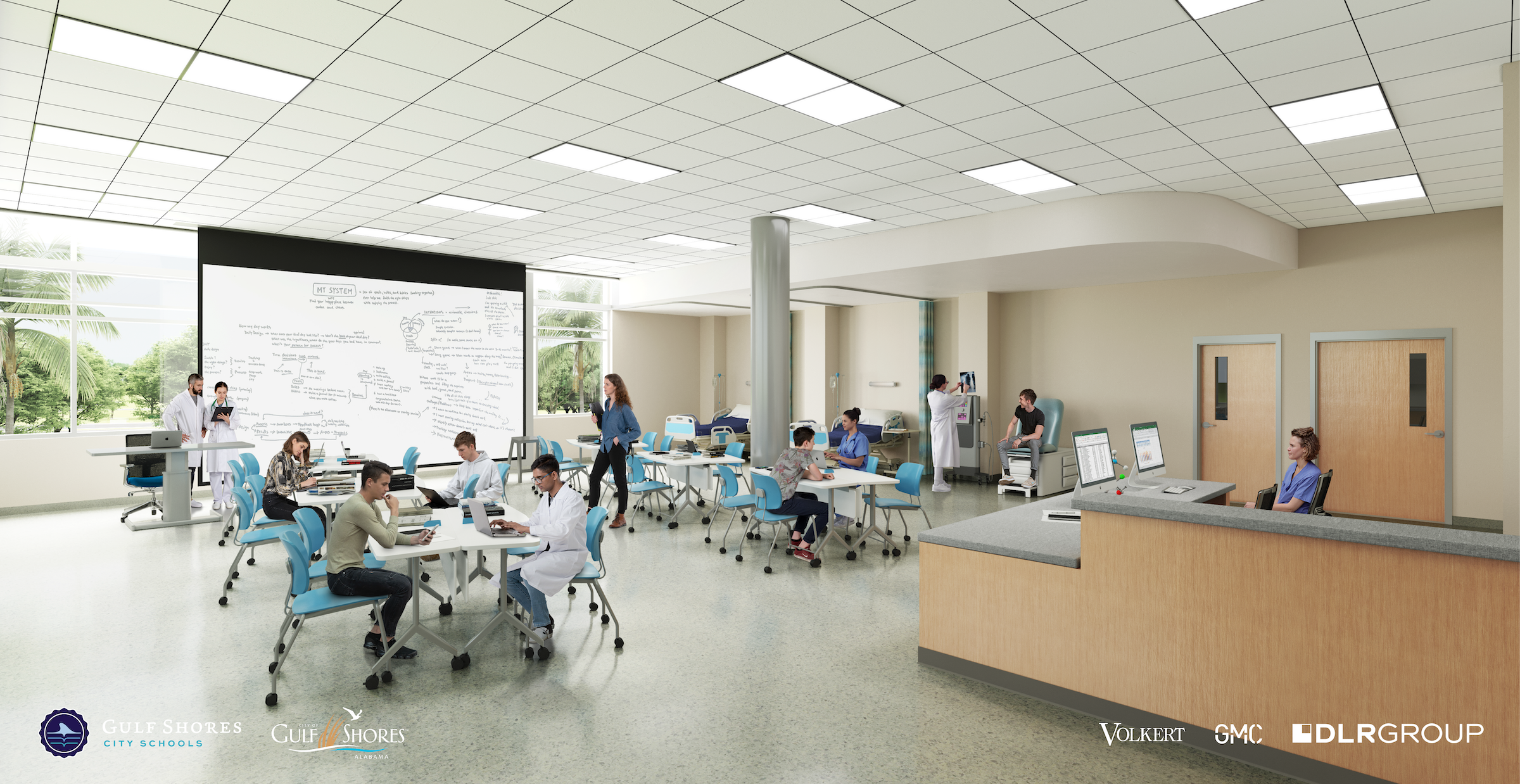
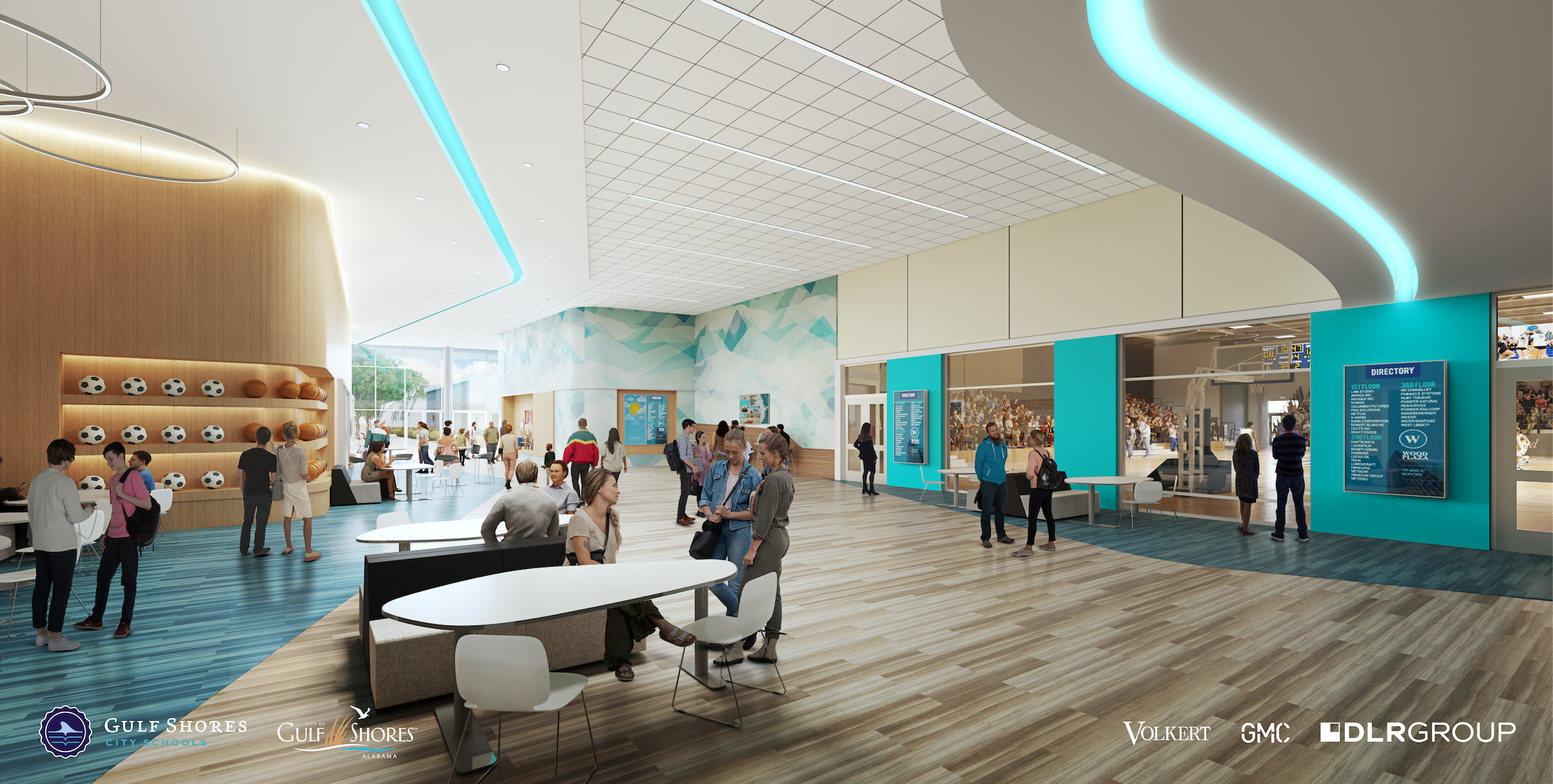
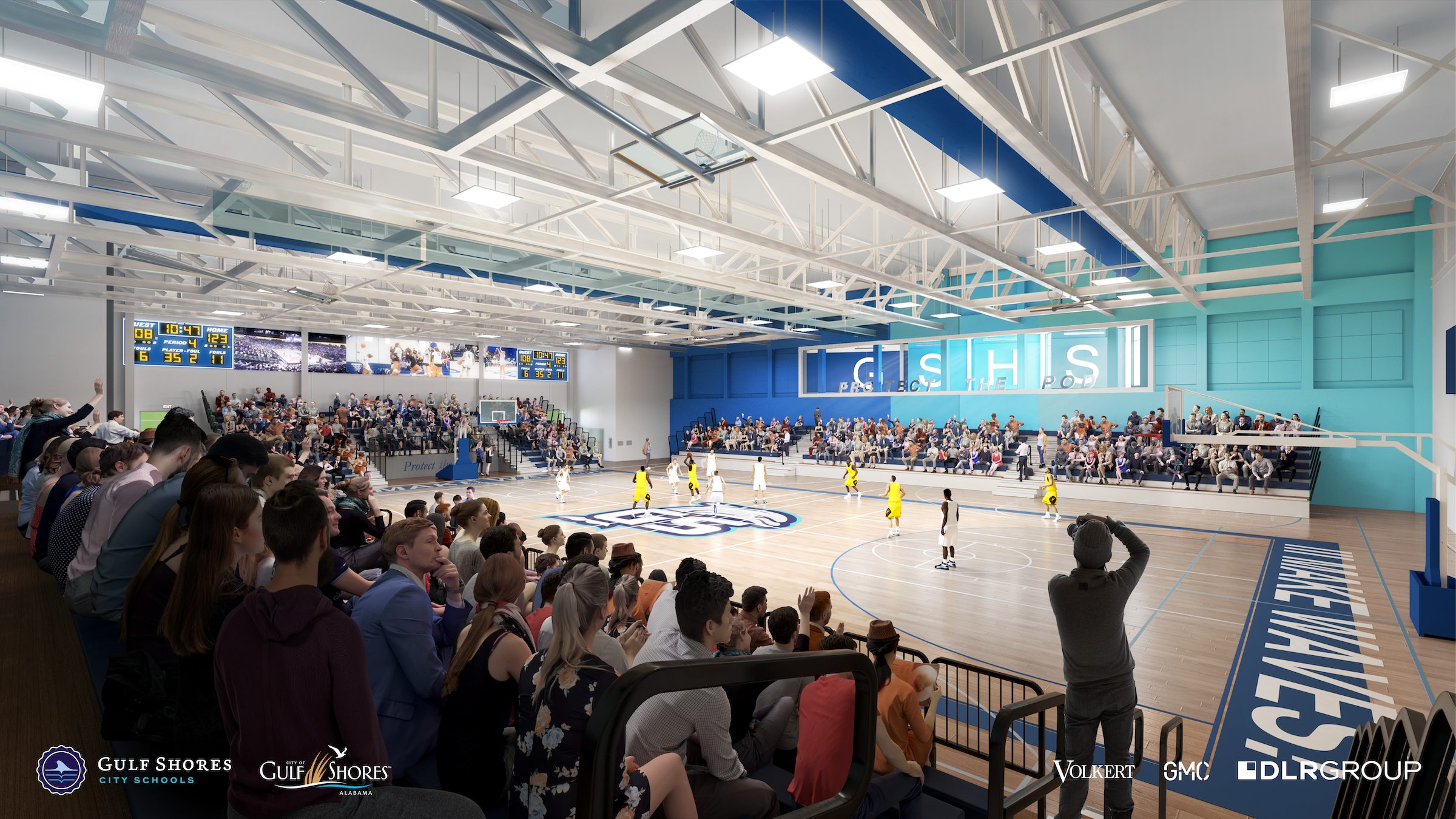
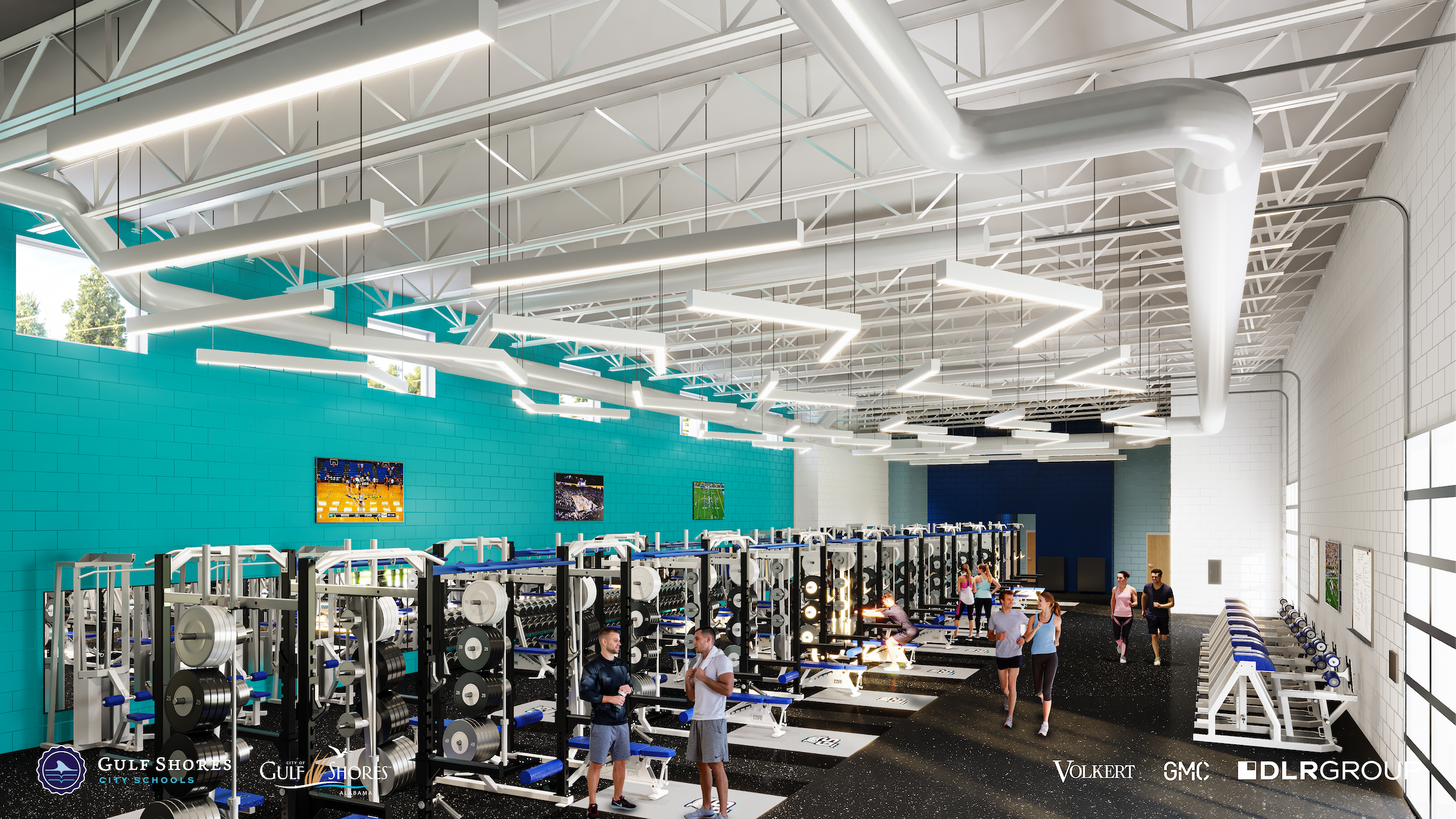
Related Stories
K-12 Schools | Apr 1, 2024
High school includes YMCA to share facilities and connect with the broader community
In Omaha, Neb., a public high school and a YMCA come together in one facility, connecting the school with the broader community. The 285,000-sf Westview High School, programmed and designed by the team of Perkins&Will and architect of record BCDM Architects, has its own athletic facilities but shares a pool, weight room, and more with the 30,000-sf YMCA.
Security and Life Safety | Mar 26, 2024
Safeguarding our schools: Strategies to protect students and keep campuses safe
HMC Architects' PreK-12 Principal in Charge, Sherry Sajadpour, shares insights from school security experts and advisors on PreK-12 design strategies.
K-12 Schools | Mar 18, 2024
New study shows connections between K-12 school modernizations, improved test scores, graduation rates
Conducted by Drexel University in conjunction with Perkins Eastman, the research study reveals K-12 school modernizations significantly impact key educational indicators, including test scores, graduation rates, and enrollment over time.
K-12 Schools | Feb 29, 2024
Average age of U.S. school buildings is just under 50 years
The average age of a main instructional school building in the United States is 49 years, according to a survey by the National Center for Education Statistics (NCES). About 38% of schools were built before 1970. Roughly half of the schools surveyed have undergone a major building renovation or addition.
Construction Costs | Feb 22, 2024
K-12 school construction costs for 2024
Data from Gordian breaks down the average cost per square foot for four different types of K-12 school buildings (elementary schools, junior high schools, high schools, and vocational schools) across 10 U.S. cities.
K-12 Schools | Feb 13, 2024
K-12 school design trends for 2024: health, wellness, net zero energy
K-12 school sector experts are seeing “healthiness” for schools expand beyond air quality or the ease of cleaning interior surfaces. In this post-Covid era, “healthy” and “wellness” are intersecting expectations that, for many school districts, encompass the physical and mental wellbeing of students and teachers, greater access to outdoor spaces for play and learning, and the school’s connection to its community as a hub and resource.
K-12 Schools | Jan 25, 2024
Video: Research-based design for K-12 schools
Two experts from national architecture firm PBK discuss how behavioral research is benefiting the design of K-12 schools in Texas, Florida, and other states. Dan Boggio, AIA, LEED AP, NCARB, Founder & Executive Chair, PBK, and Melissa Turnbaugh, AIA, NCARB, Partner & National Education & Innovation Leader, PBK, speak with Robert Cassidy, Executive Editor, Building Design+Construction.
K-12 Schools | Jan 8, 2024
Video: Learn how DLR Group converted two big-box stores into an early education center
Learn how the North Kansas City (Mo.) School District and DLR Group adapted two big-box stores into a 115,000-sf early education center offering services for children with special needs.
Designers | Jan 3, 2024
Designing better built environments for a neurodiverse world
For most of human history, design has mostly considered “typical users” who are fully able-bodied without clinical or emotional disabilities. The problem with this approach is that it offers a limited perspective on how space can positively or negatively influence someone based on their physical, mental, and sensory abilities.
Education Facilities | Nov 9, 2023
Oakland schools’ central kitchen cooks up lessons along with 30,000 meals daily
CAW Architects recently completed a facility for the Oakland, Calif., school district that feeds students and teaches them how to grow, harvest, and cook produce grown onsite. The production kitchen at the Unified School District Central Kitchen, Instructional Farm, and Education Center, (“The Center”) prepares and distributes about 30,000 meals a day for district schools lacking their own kitchens.


